The Indooroopilly Silver Mine is a historic silver mine at Indooroopilly, Brisbane, Australia
Contents

The Indooroopilly Silver Mine is a historic silver mine at Indooroopilly, Brisbane, Australia

In 1918, G. Olsen and his neighbour, Patrick J. Madden discovered silver-lead traces on Mr Olsen's land at Finney's Hill, [1] Indooroopilly, a suburb of Brisbane, Queensland, 10 km from the city centre. After some promising excavations all over the property approximately 200 feet above sea level, a mineral lease was granted to them [2] and the first ore recovered from the site was dispatched to Cockle Creek, N.S.W. for smelting. [3]
The success of this led to the construction of an underground shaft to commence open-cut mining of the site in 1919. A number of leases were taken out on the property and adjacent land. [3] A year later geophysical prospecting was undertaken, the first record of such a survey being undertaken in Queensland. [3]
In 1921, a larger shaft was sunk to recover ore and a small treatment plant was erected in 1924 to facilitate work there. Mining continued with P.J. Madden purchasing the property outright. The existing house on the land, Fernbrook, built by architect, George Addison was demolished. [4]
By 1929, the mine ceased operations, due to poor metal prices worldwide and the exhaustion of the higher grade reserve. Total production for the period 1919-1929 had been 227, 343 oz of silver and 1,795 tonnes of lead. [2]
Over the next two decades, the mine remained closed. Shafts and tunnels collapsed as timber rotted, and the land was susceptible to flooding from the Brisbane River. The University of Queensland leased the site in 1951, totalling 6 hectares for its Department of Mining. The property was owned by Brisbane City Council, who sold it to the Queensland government. In 1956, the state government provided to mine site to the University granting it permanent and exclusive surface and underground rights. [5]
The open-cut and underground workings resumed, offering the University an opportunity to manage it as a working mine and teaching facility. [6] Three shafts exist – the main shaft sunk to a depth of 290 ft, a ventilation shaft sunk to 150 ft and an inclined shaft sunk 65 degrees horizontal to the mine's 140 ft level. This was established by students of the Colombo Plan to gain experience. [7]
The mine is part of the Julius Kruttschnitt Mineral Research Centre. [8] [9]

Mining is the extraction of valuable minerals or other geological materials from the Earth, usually from an ore body, lode, vein, seam, reef, or placer deposit. Exploitation of these deposits for raw material is based on the economic viability of investing in the equipment, labor, and energy required to extract, refine and transport the materials found at the mine to manufacturers who can use the material.
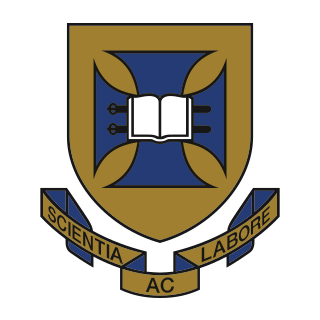
The University of Queensland is a public research university located primarily in Brisbane, the capital city of the Australian state of Queensland. Founded in 1909 by the Queensland parliament, UQ is one of the six sandstone universities, an informal designation of the oldest university in each state. The University of Queensland was ranked second nationally by the Australian Research Council in their latest research assessment and equal second in Australia based on the average of four major global university league tables. The University of Queensland is a founding member of edX, Australia's leading Group of Eight and the international research-intensive Association of Pacific Rim Universities.
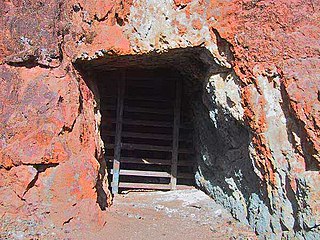
An adit is an entrance to an underground mine which is horizontal or nearly horizontal, by which the mine can be entered, drained of water, ventilated, and minerals extracted at the lowest convenient level. Adits are also used to explore for mineral veins.

North Stradbroke Island, colloquially Straddie or North Straddie, is an island that lies within Moreton Bay in the Australian state of Queensland, 30 kilometres (19 mi) southeast of the centre of Brisbane. Originally there was only one Stradbroke Island but in 1896 it split into North Stradbroke Island and South Stradbroke Island separated by the Jumpinpin Channel. The Quandamooka people are the traditional owners of North Stradbroke island.

Indooroopilly is a riverside suburb west of the City of Brisbane, Queensland, Australia. In the 2016 census, Indooroopilly had a population of 12,242 people.

Mount Isa Mines Limited ("MIM") operates the Mount Isa copper, lead, zinc and silver mines near Mount Isa, Queensland, Australia as part of the Glencore group of companies. For a brief period in 1980, MIM was Australia's largest company. It has pioneered several significant mining industry innovations, including the Isa Process copper refining technology, the Isasmelt smelting technology, and the IsaMill fine grinding technology, and it also commercialized the Jameson Cell column flotation technology.
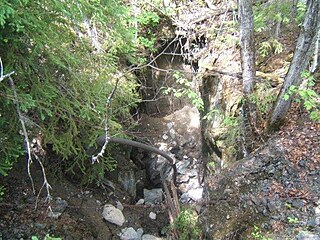
Beanland Mine, also known as Clenor Mine, is an abandoned surface and underground mine in Northeastern Ontario, Canada. It is located about 1 km (0.62 mi) west of Arsenic Lake and 4 km (2.5 mi) northwest of the town of Temagami in central Strathy Township. It is named after Sydney Beanland, who first claimed the mine site in the 1920s and was a director for the mine from 1937 to 1938.
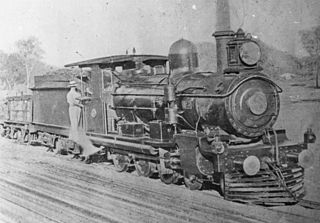
The Chillagoe Railway and Mining Company was an Australian business established in 1897 initially under the name Chillagoe Proprietary. Its initial purpose was to build a railway to the town of Chillagoe, Queensland to support the development of mining. In 1898, the company was recapitalised as the Chillagoe Railway and Mining Company.

Julius Kruttschnitt II (1885–1974) was an American-born mining manager, who helped to establish the mining industry in Queensland, Australia.
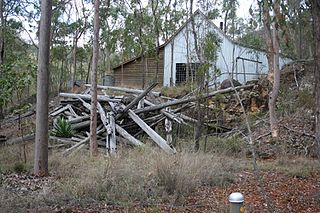
Great Northern Mine is a heritage-listed mine off Jacks Road, Herberton, Tablelands Region, Queensland, Australia. It was built from 1880 to 1940s. It was added to the Queensland Heritage Register on 21 October 1992.

Totley Township is a heritage-listed mining camp at Charters Towers Mining District, Ravenswood, Charters Towers Region, Queensland, Australia. It was built from c. 1883 to c. 1964. It is also known as Great Extended Mill, Great Extended Mine, and King's New Mill & Tramway. It was added to the Queensland Heritage Register on 21 October 1992.

Charters Towers mine shafts are a heritage-listed group of mine shafts and ruins at Charters Towers, Charters Towers Region, Queensland, Australia. It was built from 1883 to 1916. It was added to the Queensland Heritage Register on 29 April 2003.

Mount Isa Mine Early Infrastructure is a heritage-listed group of mining infrastructure on the Mount Isa Mine Lease, Mount Isa (locality), City of Mount Isa, Queensland, Australia. They comprise the Lawlor Shaft & Winding Plant, the Urquhart Shaft and Headframe, the Mount Isa Mine Experimental Dam, and the Mount Isa Mine Power Station. They were built from 1924 to c. 1963. They were added to the Queensland Heritage Register on 25 February 2005.

Ravenswood Mining Landscape and Chinese Settlement Area is a heritage-listed former mining town and archaeological site on the reserve bounded by School Street, Cemetery Road, Railway Street and Burdekin Falls Dam Road, Ravenswood, Charters Towers Region, Queensland, Australia. It was added to the Queensland Heritage Register on 14 October 2016.
Frank Thomas Matthews White (1909–1971) was an Australian mining and metallurgical engineer and mineral science educator. His career included appointments in Australia, Fiji, Malaya, and Canada.
Sir James Foots AO was an Australian mining engineer and chairman of Mount Isa Mines and Chancellor of the University of Queensland.
Ray Whitmore (1920–2008) was a British mining and metallurgical engineer and academic, who specialised in research into radar, mining and metallurgical engineering and mining heritage in England and Australia.
Alban Jude Lynch AO was a mining engineer and academic who helped develop the mineral processing teaching experience for mining students in Australia.

Llywernog Mine is an 18th-century silver-lead mine in Llywernog, Ponterwyd, Ceredigion, Wales, currently run as an industrial heritage museum and tourist attraction. It is one of many silver-lead mines in Wales, and unlike many others it still has a large number of intact buildings and mining equipment, much of which has been restored as part of the museum.
Ian MorleyISO (1904–1989) was an Australian mining engineer and administrator, who advocated for safe mining practices and reforms for the Australian mining industry.
|journal= (help)